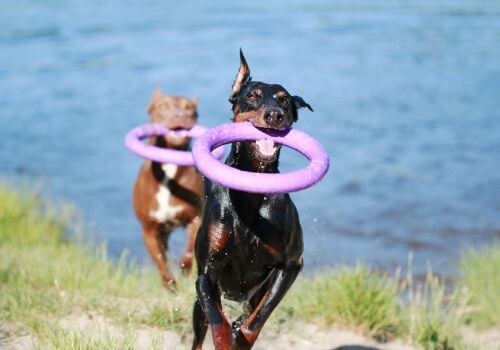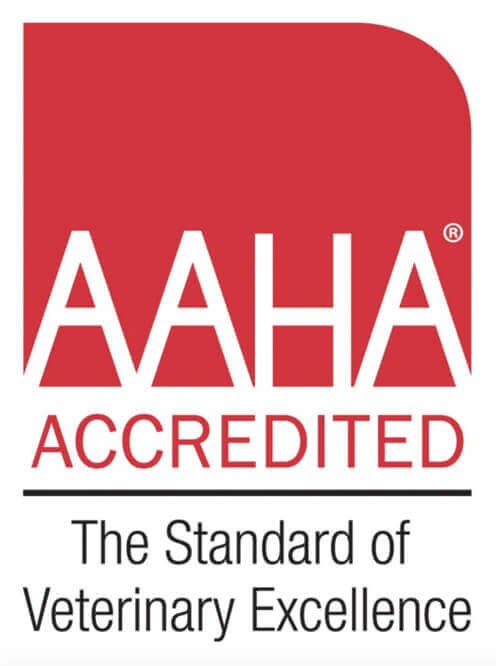As pet owners, we want the best for our furry friends. As you know, dogs need exercise and activity for optimal physical and mental health. Regular activity also helps with preventing destructive behaviors. At Bridge Veterinary Hospital, we understand the importance of providing adequate exercise to suit your dog’s age and breed. In this article, we will discuss how much activity your dog needs, how their activity level affects their behavior, and the different kinds of fun activities that you can do with your dog. With our help, you can keep your pup happy and healthy! And if you are located in or near Point Pleasant, NJ, we are here to help you better understand your canine companion’s needs.
How Much Activity Does My Dog Need for Optimal Health?
The amount of activity your dog needs depends on factors including their age, breed, and overall health. Generally, dogs need between 30 minutes to 2 hours of exercise daily to maintain optimal health. Puppies need multiple short bursts of activity and playtime rather than long walks. An adult dog’s exercise requirements are heavily influenced by their breed. High-energy breeds like Border Collies and Belgian Malinois need more exercise than lower-energy breeds like Bulldogs or Basset Hounds. It's essential to tailor the exercise routine to your dog’s breed, size, and energy level.
Regular exercise is vital for maintaining a healthy weight, muscle tone, metabolism, and mental stimulation. Exercise can also help prevent destructive behaviors and alleviate stress in dogs. Some recommendations for daily exercise based on breed groups include:
- Sporting Breeds: 1 hour
- Large Breeds: 1-1.5 hours
- Terriers and Medium-Sized Breeds: 1-2 hours
- Small and Toy Breeds: 30 minutes
Monitor your dog’s response to exercise and adjust the routine if needed. If you need help, consult with your veterinarian to determine the appropriate exercise regimen for your pup!

How Does the Ideal Activity Level Change Based on Age and Breed?
Puppies need to exercise in short bursts throughout the day. This prevents overexerting their growing joints and bones. As puppies grow into adults, their ideal activity level changes based on their breed. High-energy breeds such as Retrievers and Setters need 1 to 2 hours of moderate-intensity exercise daily, while toy or small dog breeds only require 30 minutes. For working breeds like Siberian Huskies and Saint Bernards, a substantial amount of exercise is recommended; activities like long walks and hikes should be part of their routine. Senior dogs may not have the same energy levels as younger dogs but still need regular physical activity and mental stimulation to maintain mobility and mental health. Swimming or other low-impact exercises are great options for senior dogs. Talk to your veterinarian if you’re unsure how to exercise your older canine companion.
What Health Problems Can Arise in Dogs That Don’t Get Enough Activity?
A lack of exercise in dogs can lead to various health issues affecting their physical, mental, and emotional well-being. Weight gain is one of the most common health problems among inactive dogs. If your pup isn’t getting enough exercise, they may become obese. Obesity can lead to other health problems like heart disease, diabetes, and joint issues. Inactive dogs also tend to have weaker muscles, making them more prone to injuries and joint problems. Poor cardiovascular health is another consequence of insufficient activity.
How Does a Dog’s Activity Level Affect Their Behavior?
Regular exercise and playtime can positively impact your dog’s behavior. Exercise reduces dogs' anxiety, fear, and aggression by releasing endorphins that make them feel happier. It also helps them build trust and confidence in their owners and the environment, making them better behaved. Regular exercise is also essential for mentally stimulating your dog since boredom can lead to destructive behaviors like chewing furniture or barking excessively. Providing your pup with the right amount of activity for their age and breed promotes better overall behavior.

What Should I Do to Deal With Destructive Activities and Behaviors?
Destructive pet behaviors occur due to various problems, such as teething in puppies, medical problems, separation anxiety, attention-seeking, fear, and boredom. To address these issues effectively, be attentive to your pet's needs, and provide them with a secure designated space when left alone. Put away all items your dog can get into their mouth to prevent access to chewable items. Regular exercise and mental stimulation are also essential for reducing destructive behaviors in pets. Daily walks or cardio games are essential because they help release pent-up energy. If the behavior is anxiety-related, consult your veterinarian or a behavior specialist to address the underlying issue.
What Are Some Fun Activities I Can Do with My Dog?
There are so many fun activities that you can do with your dog! Of course, these activities are often dictated by the weather where you live but there is nearly always some sort of activity that you can partake in with your canine companion.
Some fun activities you can do with your dog include:
- Playing with them outside
- Throwing the frisbee
- Kicking a ball around
- Playing fetch
- Taking a hike
- Taking a walk
- Going for a run(if your dog breed permits)
- Taking them to a dog park (if their demeanor permits)
- Taking them to an outdoor or indoor agility course (or build your own!)
- Taking them to a body of water such as a pond, lake, or the ocean (make sure the water is clean and don’t let them drink from it)
The possibilities are seemingly endless, but the one thing we’d caution as veterinarians is to always take cues from your dog. If they seem too hot or too cold, end the activity. If you’re taking them out during the winter, make sure they are warm enough, which could mean providing them with booties for their paws and a dog sweater or jacket. If you’re taking them for a summer activity, make sure to pack plenty of water.

What if my dog is lethargic and won't exercise?
In this case, you’d want to encourage your dog to exercise, but if they don't want to, then you might have to think of some incentives. You may want to approach exercise gradually, in short increments, and encourage your dog with lots of praise. Slowly work them up to where they might think that it's fun and pick something they like. Maybe your dog doesn’t like running but they have a favorite toy, so you could take that toy outside and then get them to play. Or even inside exercise can be good, such as throwing a ball up the stairs for them. If they’re truly lethargic on a regular basis, that could indicate that something is physically wrong, so it’d be time to take them to the veterinarian for an exam.
Are there any health issues that might affect my dog’s ability to exercise?
If your dog is arthritic or they have other issues with their joints, that would limit their ability to do certain types of exercises. We have dogs that sustain knee injuries, so frisbee-throwing would not be something we would want them to do because stopping, twisting, and turning are not good for the knees. If the dog has other health concerns, perhaps the kidneys, you might limit the amount of exercise they could do to keep them safe.
If you live in or near Point Pleasant, NJ, and are looking for quality pet care, come visit us at Bridge Veterinary Hospital where your pet is our priority. Contact us at (567) 361-3407 to set an appointment, or email us at [email protected]. Our staff would love to talk with you!

